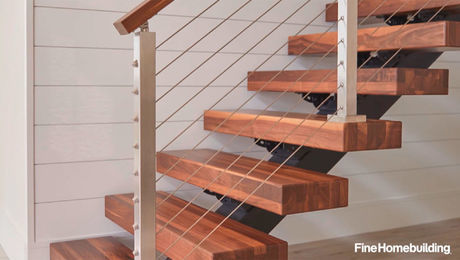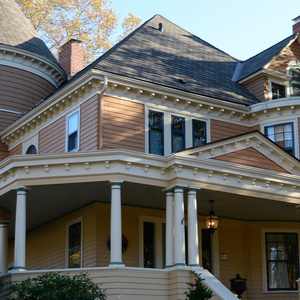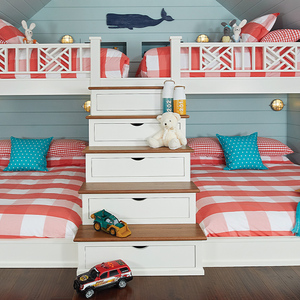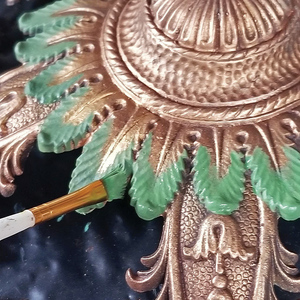I PLAN TO INSTALL 1X1O CEDAR CLAPBOARD WHICH I WILL BACKPRIME AND FRONTPRIME BECAUSE IT WON`T BE PAINTED UNTIL THE SPRING. IS THE RIGHT EXPOSURE ABOUT 8″? THE HOUSE IS ABOUT 80 YEARS OLD WITH ROTTING CEDARSHAKES WHICH I WILL TEAR OFF. I INSTALLED ALL NEW ANDERSON DOUBLE HUNGS AND I WOULD LIKE TO PUT UP SOME EXTERIOR WINDOW TRIM . I HAVE ACCESS TO PINE AND POPLAR. SHOULD I USE 5/4 MATERIAL? FINE HOMEBUILDING # 112 IS GREAT ABOUT INSTALLING CLAPBOARDS BUT NOTHING ABOUT EXTERIOR TRIM. THE HOUSE HAS A CAPE COD LOOK WITH SEVERAL DIFFERANT HIGHT GABLES OR PEAKS. ANY HELP REGARDING THE TRIM IS GREATLY APPRECIATED.
Discussion Forum
Discussion Forum
Up Next
Video Shorts
Featured Story

Simple air-sealing measures and spray-applied sealant lower energy bills and increase comfort without the need to tear the house apart.
Featured Video
Builder’s Advocate: An Interview With ViewrailHighlights
"I have learned so much thanks to the searchable articles on the FHB website. I can confidently say that I expect to be a life-long subscriber." - M.K.
Fine Homebuilding Magazine
- Home Group
- Antique Trader
- Arts & Crafts Homes
- Bank Note Reporter
- Cabin Life
- Cuisine at Home
- Fine Gardening
- Fine Woodworking
- Green Building Advisor
- Garden Gate
- Horticulture
- Keep Craft Alive
- Log Home Living
- Military Trader/Vehicles
- Numismatic News
- Numismaster
- Old Cars Weekly
- Old House Journal
- Period Homes
- Popular Woodworking
- Script
- ShopNotes
- Sports Collectors Digest
- Threads
- Timber Home Living
- Traditional Building
- Woodsmith
- World Coin News
- Writer's Digest


















Replies
mb... i know i'm hard of hearing , but you don't have to shout..
1x10 claps are usually 9.5" so an 8" exposure would be right.. however.. a 1x10 clap may not look good with a cape.. a 1x6 ( 4" exposure ) might be more appropriate..
as for trim, we use a false sill of trex... and 5/4 x4 casing with a 5/4 x6 head casing..
Mike Smith Rhode Island : Design / Build / Repair / Restore
Looks good Mike,
So the bottom/starter piece of trim is Trex?
Plumber came by today, but he didn't have the tube to put in the climate panel. So again I wait. By the way have you ever put that stuff down? Any advice on how to cover it with hardwood flooring?
Turtleboy
PS got the info about adding to each riser due to the new second floor height. Took the baby to the beach yesterday to check out the waves and watch her try to walk with the water washing over her feet. She loved it. Stay safe in the storm, one guy got killed when he got washed off the rocks in Narragansett.
the false sill is trex....
i've never done any of the climate panel.. but others here have. keep asking..
here's the profile on the trex sillMike Smith Rhode Island : Design / Build / Repair / Restore
have you considred fibercement (hardie plank0 for the claps? It will keep you from spending you life scraping painting caulking and replacing rotted cracked and soft wood
wain... u dolt !... that is fibercement.. but i prefer Certainteed to Hardi
Mike Smith Rhode Island : Design / Build / Repair / Restore
Edited 9/19/2003 6:27:04 PM ET by Mike Smith
That's the house that had little pumpkins lined up in front of it last fall, isn't it?
That bright yellow must wake the neighbors up in the morning, eh?.
Excellence is its own reward!
yes, that's the 1.. we're back there now ( 2 years later ) to do another 5 -6 sides..Mike Smith Rhode Island : Design / Build / Repair / Restore
We are planning on a similar installation on a bungalow. Anyone here used Benjamin Obdyke's Home Slicker under cedar?
Yes. Used it under cedar shakes and worked fine.
Nice looking house, Mike.
I don't think it's as easy as saying "such and such size casing and such and such size fascia". Do some careful scale drawings and experiment with various exposures, size of trim elements. It all has to look right in relation to the size building and all the other shapes and angles on that building. There has to be a certain harmony. That's why some buildings look "right" and others don't.
That's what makes architecture the grandest of the arts. True art is a gift, like athletic prowess, musical talent, or physical beauty; it can be enhanced, but not learned.
Regarding the siding...the 8" exposure on 10" siding would be fine from the "installation" point-of-view. As for aesthetics, both Mike and jb are right...it may or may not look "right", for beauty is in the eye of the homeowner.
Small point, often when applying a clap-type of siding, the butts of the siding are sometimes installed to break at the top and bottom of the window's trim. This precludes you from having to make large cutouts on a clap to fit the siding over the top or bottom of the window trim. To do this, the exposure can be fudged as required. It's easier, and less noticeable, to fudge several exposures (which you would get with a 6" clap on 4" exposure) than trying to lose or gain a bit with just a few claps (10" clap on 8" exposure). Again, matching the butts with the top/bottom of the trim is not required.
For the trim. 5/4 is better as it gives greater detail and depth to the wall, and thus more shadow lines. You don't want the lapped butt of the claps to even come close to being flush with the window trim, you need the trimm tos stand proud. Looks better, plain and simple, and performs better when butting claps to the trim.
As for poplar or pine, definitely take a pass on the poplar. Poplar really shouldn't be considered for outdoor exterior use, especially in window trim. If it does go, window trim surrounded by claps is not the easiest thing to R&R. If it's one or the other (pine or poplar), use pine, backprime, and even try to paint the pine for added protection.
If priming the siding and leaving it to weather for an extended period, reprime before you paint in the Spring.
Excellent post. Ditto on the backprime, especially if using pine (poplar is not a viable option.) The better choice is to use cedar for its rot resistance. If that is not in the plans/budget, take care to prime all cuts made on the trim prior to installation. I even use a small amount of silicone caulk smeared on the end grain before nailing it up. I've had to replace too much pine trim that rotted due to end grain capillary action. This is especially true for vertical trim that butts into horizontal trim, and any low-lying miters.
I never met a tool I didn't like!
I use Kilz spray (or other shellack - sp? based paint) on all the end grain cuts. Probably not as messy as silicone and it's paintable.
Another way to get the depth is to add a detail strip over 3/4" material.
I agree about no poplar too, but I never diod like the fudge thing. It has tpo be done carefully to keep it from looking like a drunken sailor was hanging that siding that day. Too many guys don't pay attention to how it comes out or runs around the house..
Excellence is its own reward!
MBW,
Another nice old detail on Capes is to gradually increase the exposure of the claps from the mudsill up 4-6 courses. So, if you've set standard exposure at say 5" then the first 4-6 courses going up would range from 2"-5". I suspect that this detail originated as a way of providing extra meat in the areas close to the groundplane and thus subject to water damage, rot etc. In shingling, the base course is often 2-3 layers-same idea. Its a nice touch.
On the PVC sills-does this stuff paint out OK?